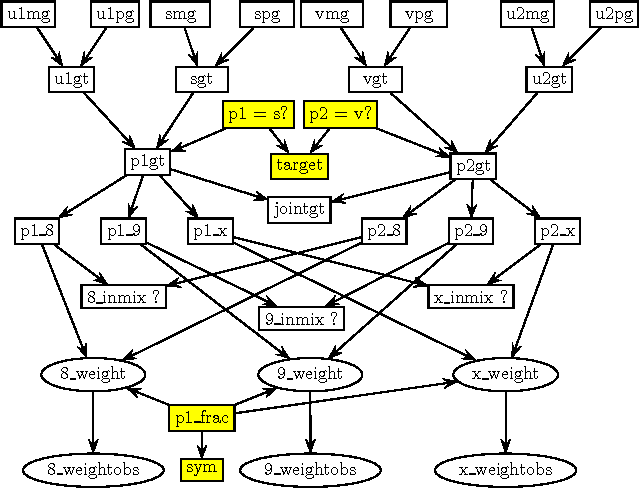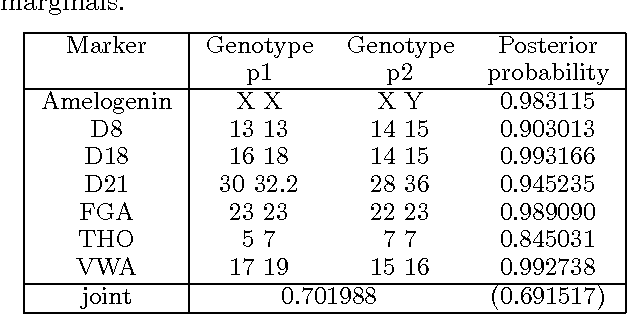Robert G. Cowell
Conditions Under Which Conditional Independence and Scoring Methods Lead to Identical Selection of Bayesian Network Models
Jan 10, 2013Abstract:It is often stated in papers tackling the task of inferring Bayesian network structures from data that there are these two distinct approaches: (i) Apply conditional independence tests when testing for the presence or otherwise of edges; (ii) Search the model space using a scoring metric. Here I argue that for complete data and a given node ordering this division is a myth, by showing that cross entropy methods for checking conditional independence are mathematically identical to methods based upon discriminating between models by their overall goodness-of-fit logarithmic scores.
MAIES: A Tool for DNA Mixture Analysis
Jun 27, 2012



Abstract:We describe an expert system, MAIES, developed for analysing forensic identification problems involving DNA mixture traces using quantitative peak area information. Peak area information is represented by conditional Gaussian distributions, and inference based on exact junction tree propagation ascertains whether individuals, whose profiles have been measured, have contributed to the mixture. The system can also be used to predict DNA profiles of unknown contributors by separating the mixture into its individual components. The use of the system is illustrated with an application to a real world example. The system implements a novel MAP (maximum a posteriori) search algorithm that is described in an appendix.
Propagation using Chain Event Graphs
Jun 13, 2012Abstract:A Chain Event Graph (CEG) is a graphial model which designed to embody conditional independencies in problems whose state spaces are highly asymmetric and do not admit a natural product structure. In this paer we present a probability propagation algorithm which uses the topology of the CEG to build a transporter CEG. Intriungly,the transporter CEG is directly analogous to the triangulated Bayesian Network (BN) in the more conventional junction tree propagation algorithms used with BNs. The propagation method uses factorization formulae also analogous to (but different from) the ones using potentials on cliques and separators of the BN. It appears that the methods will be typically more efficient than the BN algorithms when applied to contexts where there is significant asymmetry present.
 Add to Chrome
Add to Chrome Add to Firefox
Add to Firefox Add to Edge
Add to Edge